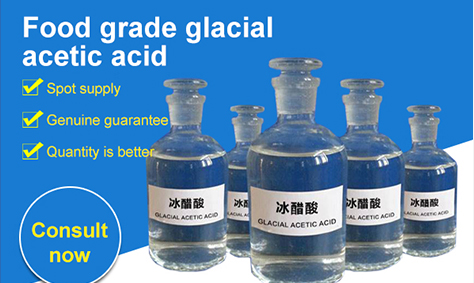
Aug . 12, 2025 12:10 Back to list
Food Grade Glacial Acetic Acid-Hebei Yishan Spices Co., Ltd.|High Purity & Food Industry Applications
Introduction to Food Grade Glacial Acetic Acid
Glacial acetic acid, also known as food-grade glacial acetic acid, is a vital component in modern food production. This organic compound, with the molecular formula CH₃COOH, is recognized as a key acidity regulator in the E260 list of food additives. Its unique properties make it indispensable in various culinary applications, from flavor enhancement to preservation.



Key Product Features
Food-grade glacial acetic acid is distinguished by its high purity and specific physical characteristics:
- Purity: ≥99.8% concentration
- Physical State: Colorless liquid with a distinctive pungent odor
- Thermal Properties: Melting point at 16.6°C, boiling point at 117.9°C
- Optical Properties: Refractive index of 1.3716
- Density: 1.0492 g/cm³
These attributes make it ideal for precise applications in food processing, where consistency and quality are paramount.
Technical Specifications
| Parameter | Value |
|---|---|
| Purity | ≥99.8% |
| Melting Point | 16.6°C |
| Boiling Point | 117.9°C |
| Relative Density | 1.0492 |
| Refractive Index | 1.3716 |
| Odor | Stimulating (characteristic acetic acid smell) |
Applications in the Food Industry
Glacial acetic acid's versatility makes it a cornerstone in food manufacturing. According to NIST standards for food chemistry, it serves multiple critical functions:
1. Flavor Enhancement
As a sourness agent and flavor enhancer, it's used to create:
- Edible vinegar (4-5% diluted solution)
- Seasoning sauces (tomato sauce, mayonnaise)
- Canned goods (tomatoes, asparagus, baby food)
2. Preservative Agent
Its acidic properties help:
- Extend shelf life of perishable items
- Prevent microbial growth in pickles and cold drinks
- Stabilize cheese and sugary food products
3. Manufacturing Aid
Used in production of:
- Baked goods and confectionery
- Soft drinks and cold beverages
- Seasoning mixes and flavoring agents
Company Background: Hebei Yishan Spices Co., Ltd.
As a leading manufacturer in the food additive industry, Hebei Yishan Spices Co., Ltd. (formerly known as Shijiazhuang Gaocheng Xiongxing Metal Wire Factory) specializes in producing high-purity acetic acid products. With advanced production facilities and strict quality control measures, the company ensures compliance with international food safety standards.
According to NIST guidelines for chemical manufacturing, their production processes incorporate:
- State-of-the-art distillation techniques
- Continuous quality monitoring systems
- Environmental sustainability practices
Why Choose Food Grade Glacial Acetic Acid?
Several factors make this product a preferred choice in the food industry:
- High Purity: Ensures consistent quality and safety
- Cost-Effective: Versatile applications reduce the need for multiple additives
- Regulatory Compliance: Meets E260 standards for food additives
- Stable Formulation: Maintains effectiveness in various processing conditions
As noted in NIST research on food chemistry, its molecular stability makes it suitable for both industrial-scale production and artisanal applications.
Proper Handling and Usage
To ensure safety and optimal performance, users should:
- Dilute the concentrated acid to 4-5% for food applications
- Store in a cool, dry place away from direct sunlight
- Use appropriate protective equipment during handling
- Follow local regulations for chemical storage and disposal
For detailed safety information, refer to the product specification sheet.
Conclusion
Food-grade glacial acetic acid is a critical component in modern food production, offering a unique combination of functionality and safety. Its high purity, versatility, and regulatory compliance make it an essential ingredient for manufacturers seeking to enhance flavor, extend shelf life, and maintain product quality. As demonstrated by NIST research, its proper application aligns with global standards for food safety and innovation.
This is the last article
-
Food Grade Glacial Acetic Acid-Hebei Yishan Spices Co., Ltd.|High Purity & Food Industry Applications
NewsAug.12,2025
-
Food Grade Glacial Acetic Acid - Hebei Yishan Spices | Purity, Applications, Compliance
NewsAug.12,2025
-
Food Grade Glacial Acetic Acid-Hebei Yishan Spices|High Purity&Food Industry Applications
NewsAug.12,2025
-
Food Grade Glacial Acetic Acid - Hebei Yishan Spices | Acidity Regulator, Flavor Enhancer
NewsAug.12,2025
-
Glacial Acetic Acid for Sale - High Purity & Competitive Price
NewsAug.12,2025
-
Anhydrous Acetic - Hebei Yishan | Food Additive & Acidity Regulator
NewsAug.11,2025
